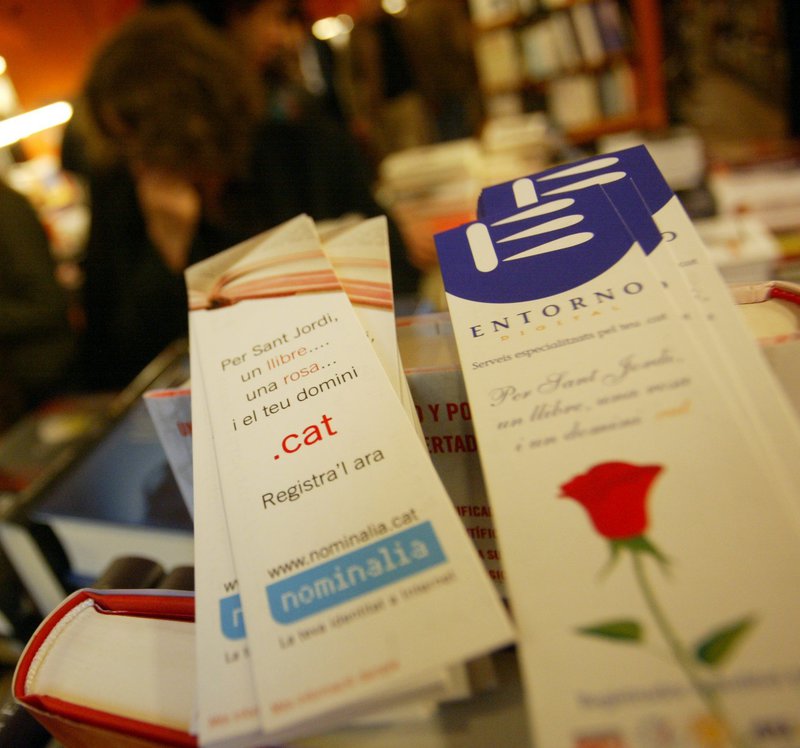Dot cat 10 years old
As the .cat internet suffix approaches its 10th anniversary, the domain name extension continues to experience great success, especially among companies
It is almost 10 years since ICANN (Internet Corporation for Assigned Names and Numbers), the institution that regulates internet domain names, approved the .cat suffix. The first websites with the address appeared in February 2006, and use of the suffix has not stopped since. The .cat suffix is unique as it was not only the first to represent a cultural community, but also in the intervening years has acted as an example for others.
“It was not an easy process; ICCAN did not have much faith in it and thought it was for websites about cats. It finally approved the name and there is no doubt it has been a success,” says Santi Ribera, director of the Fundació puntCAT.
Contrary to what many think, the .cat suffix does not depend on the Catalan government. As a representation of a culture, it was civil society that established it. The suffix is managed by the foundation, an independent, non-profit organisation: “We get no public subsidies. We simply sell the domain,” says Ribera. Thus the foundation has a revenue stream but no need to share out the profits to shareholders, allowing it to re-invest the money in consolidating and expanding the use of the suffix.
Linking the world
Domain names are important; they are key in how computers connect over the Internet. There are two types. One refers to territories (Country Code Top Level Domain), of which there are 300 around the world, usually referring to states, such as .fr for France. Not being a state, Catalonia does not fall into this category. The other type are generic domains (General Top Level Domain), and refer to the type of website content or the characteristics of the organisation that uses it. This is the case of the most common domain – .com – as well as .org or .net. These were the first, in 1985. However, in 2004, ICANN expanded the criteria for generic domain names, allowing the creation of .cat, as well as .mobi, .tel or .xxx (for adult content).
Though .cat does not refer to Catalonia as a territory, it is true that the majority of websites using the suffix are based in the country, with a lower percentage used in places such as the Balearic Islands or Valencia. According to the foundation's market research, there are three main reasons for clients to choose the .cat domain: for reasons of national identity, because the website is in Catalonia or because the content is in Catalan.
Seven years ago ICANN extended its criteria in accepting new domain suffixes, freeing up the generic category. Yet, the process has been slow, with the first (1,800) applications for new internet suffixes made in 2011 only beginning to be approved in 2014, with the rest expected by the end of this year. Not that all applications are accepted by ICANN, as some do not fulfil the technical or financial requisites, or because they do not have enough support behind them.
A unique example
Of the hundreds of applications for generic internet suffixes, some 86 follow the example of .cat, among them .eus (Euskadi, for the Basque Country) and .gal (Galicia), as well as .corsica (Corsica), .scot (Scotland), and .bzh (Brittany). This category also includes individual cities, such as .barcelona, .madrid, .nyc, or .berlin.
The rise in the number of generic suffixes available does not worry the people who manage the .cat domain: “The appearance of these new domains has created the concept of multi-extension, which means that if you have a website, you can have different extensions according to who you want to target. A good example is Barça. The Catalan version of its website is fcbarcelona.cat, while the Spanish version is .es,” points out Ribera.
On the level of searches, Google and other search engines will increasingly show sites based on contextual analysis. For example, when looking for a Barcelona bicycle shop with a site in Catalan, search engines will be more likely to show .cat websites: “The algorithm that search engines use is increasingly relevant and takes into consideration variants,” says Ribera. Thus, in the example of the bicycle shop, the most sensible thing is to have three web addresses using the suffixes .cat, .barcelona, and even .bike.
Nevertheless, the use of the .cat domain has not stopped growing. At the end of last year, there were 83,000 web addresses using this suffix. A key sign of its success is that the renewal rate is very high. What's more, the internet in Catalonia is still not available to 100% of the population, which will allow for more growth, while 60% of web addresses registered with the .cat suffix are companies, something that the foundation considers very positive for the future perspectives of .cat.
As for the future, there are questions over what will happen if Catalonia attains independence, as that would allow the Catalan government to demand a territorial suffix from ICANN. In that case, the most likely thing would be .ct, as .ca is already taken by Canada. In Ribera's opinion: ”The .ct suffix could be the territorial domain name for everyone, including the people who do not make content in Catalan, while .cat would strictly be for Catalan content,” he concludes.
Promoting Catalan on the net
The main activity of the Fundació puntCAT is the promotion and sale of the .cat suffix. However, it also promotes Catalan non the internet. For the past five years, the foundation has organised a website design contest for students. In the latest edition, 2,000 took part. The foundation also has a permanent initiative called Navega en català encouraging users to set up their computers to navigate in Catalan. Thus, in searches, Google makes Catalan the preferential language in its results. Finally, it has begun a campaign to have Linkedin in Catalan.

